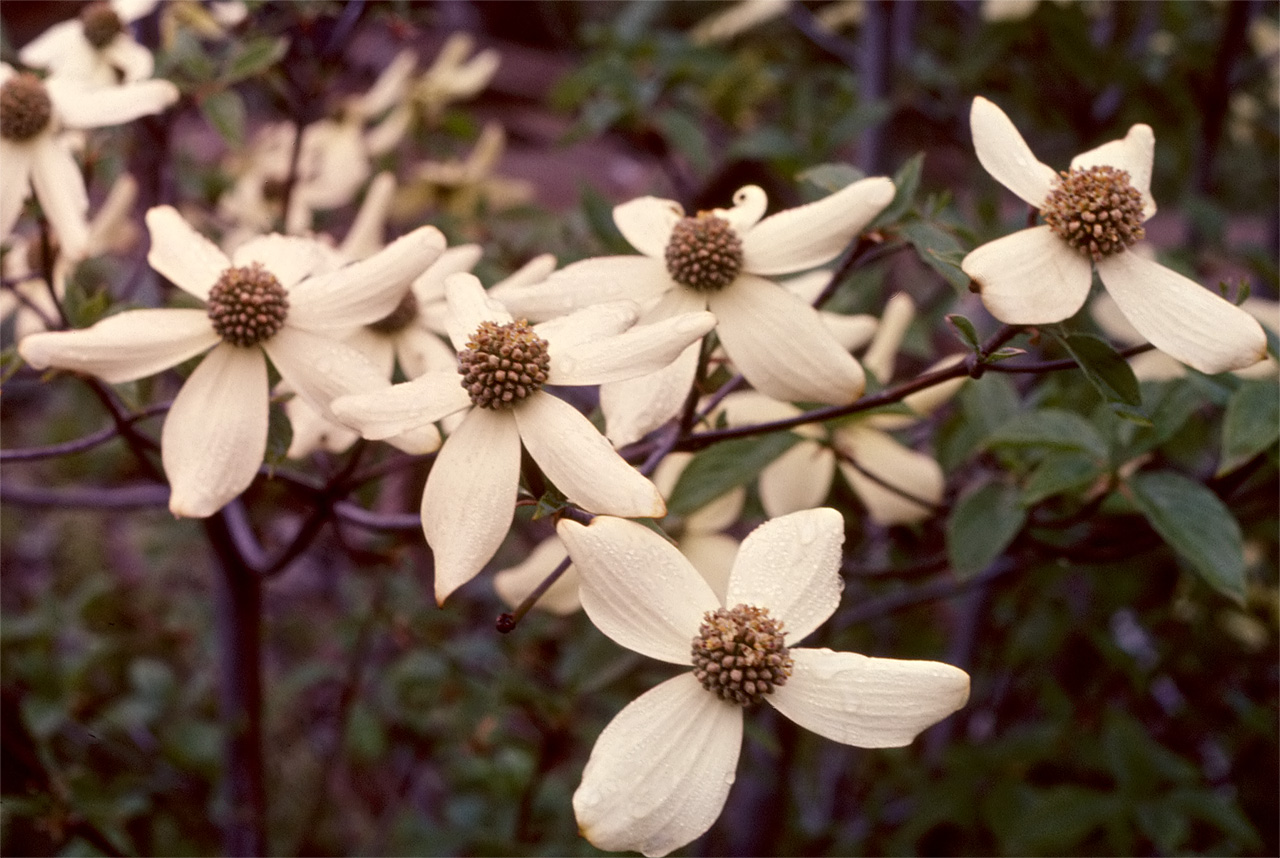Gallery containing public domain photos of flowers and plants from the Canadian National Parks – Western Canada. From the warm, temperate broadleaf forests of southern Ontario to the frigid Arctic plains of Northern Canada, from the wet temperate rainforests of the west coast to the arid deserts, badlands and tundra plains, the biodiversity of Canada’s plants is extensive.
Chrysanthemums were first cultivated in China as a flowering herb as far back as the 15th century BC. The plant is renowned as one of the Four Gentlemen in Chinese and East Asian art. The plant is particularly significant during the Double Ninth Festival. The “Festival of Happiness” in Japan celebrates the flower. About 30 species have been described.
Prunus virginiana (also chokecherry) is a species of bird cherry native to North America; the natural historic range of P. virginiana includes most of the continent, except for the far north and far south. It is a suckering shrub or small tree growing to 5 m tall. The flowers are produced in racemes of 15-30 in late spring (well after leaf emergence). The fruit are about 1 cm diameter, range in color from bright red to black, with a very astringent taste.
Claytonia perfoliata (Montia perfoliata) is a fleshy annual plant native to the western mountain and coastal regions of North America from southernmost Alaska and central British Columbia south to Central America. Is a trailing plant, growing to a maximum of 40 cm in length, but mature plants can be as small as 1 cm. The small pink or white flowers have five petals 2–6 mm long; they appear from February to May or June.
Crocus is a genus of flowering plants in the iris family comprising 90 species of perennials growing from corms. Many are cultivated for their flowers appearing in autumn, winter, or spring. Crocuses are native to woodland, scrub and meadows from sea level to alpine tundra in central and southern Europe, North Africa and the Middle East, on the islands of the Aegean, and across Central Asia to western China.
Cirsium vulgare (Spear Thistle) is a species of the genus Cirsium, native throughout most of Europe, western Asia, and northwestern Africa. It is also naturalised in North America and Australia and is as an invasive weed in some areas. It is a tall biennial or short-lived monocarpic thistle, forming a rosette of leaves and a taproot up to 70 cm long in the first year, and a flowering stem 1-1.5 m tall in the second (rarely third or fourth) year.
Spear Thistle is often a ruderal species, colonising bare disturbed ground, but also persists well on heavily grazed land as it is unpalatable to most grazing animals. The stems can be peeled and then steamed or boiled. The tap roots can be eaten raw or cooked, but only on young thistles that have not flowered yet.
